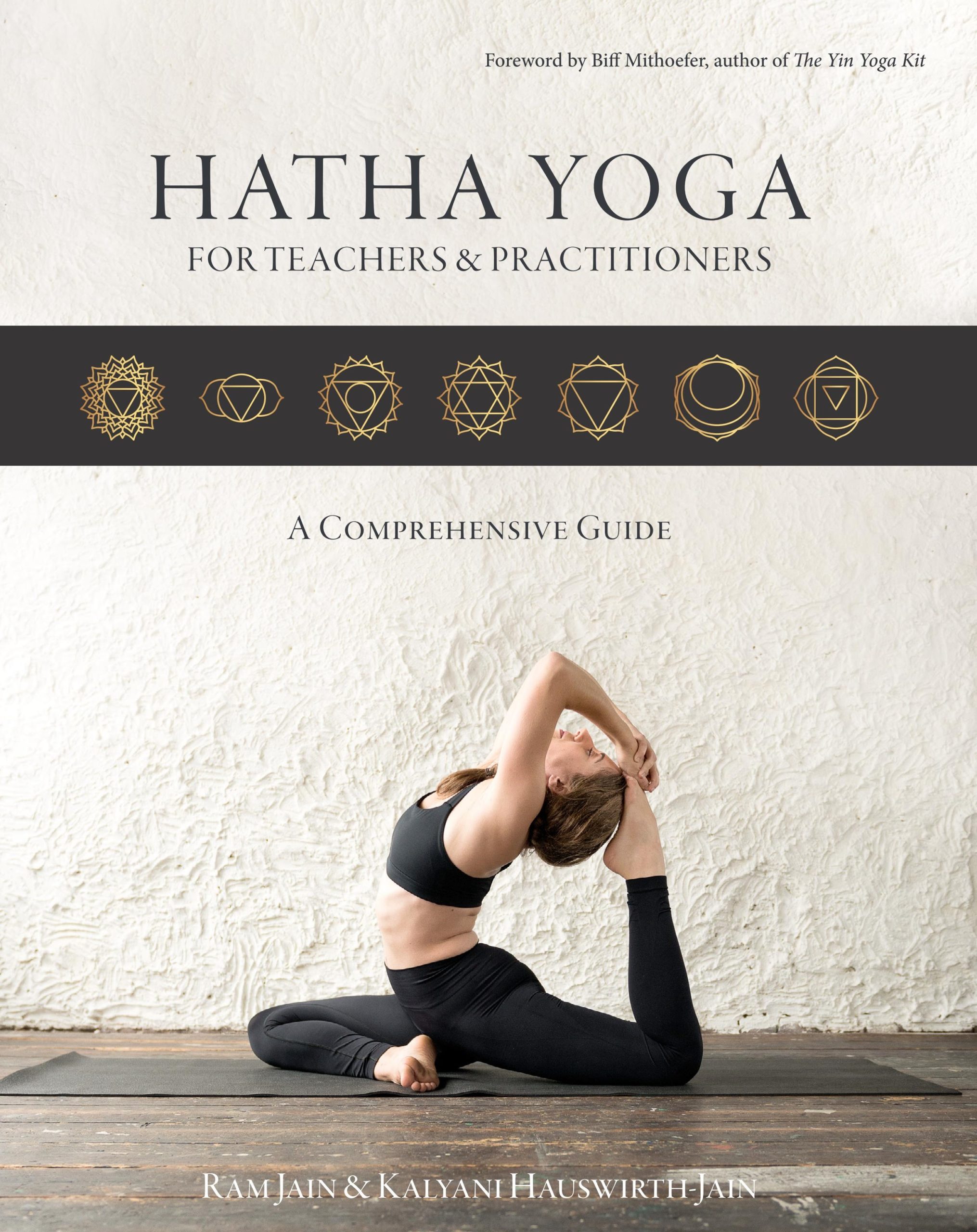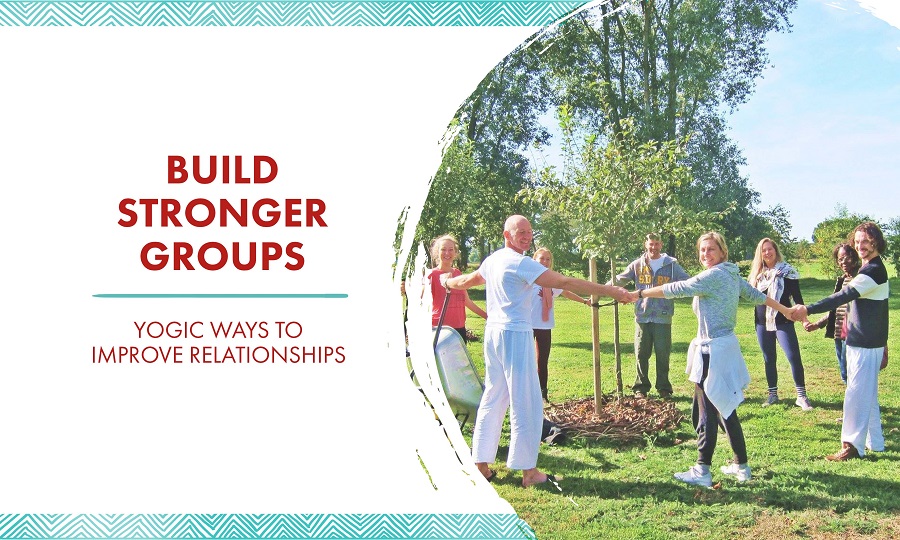As a yoga teacher, you also surely work with groups of people . In other parts of life, you may also interact in groups. Such as your family and friends. What if you could bring a new dimension to the groups and teams that you work with using principles from yoga? How can yoga help to build a stronger connection with others? Read on to find out more!
Using Yoga to Connect to Yourself and Others
First of all, yoga is a powerful way to cultivate a stronger connection to yourself. All yogic practices aim at ultimately connecting to a deeper sense of Self. You might think of yoga as a purely individual practice. However, yoga is also about connection. ‘Yoga’ in Sanskrit can be translated as ‘yoking’, or ‘connecting’. It is also often translated as ‘union’, which reflects the core idea of yoga philosophy: All is connected, everything is one.
The ability to connect, to engage in relationships with others, requires the capacity to connect to yourself. We need to cultivate a stable sense of self and a feeling of safety. When we feel safe, we are relaxed and open. Therefore, we are able to communicate and share feelings. This is reflected in the state of our body and mind. It is a state that we can achieve through regular meditation practice.
4 Easy Yogic Exercises to (Re)connect with Oneself
Most yogic exercises will help you bring your awareness inward. Thereby, you are reconnecting with yourself and calming your body and mind. These techniques are especially useful:
- Yoga Nidra – will help you to connect at a deep level through relaxation of the body, senses, and mind.
- Meditation – a structured way to cultivate a state of Self-awareness.
- Abdominal breathing – a simple exercise that brings your awareness to the present moment, helps to calm down, and thereby connects you to your Self.
- Body awareness – actually feel your posture, wherever you are, on the mat or in daily life.
Yoga Philosophy & Group Relationships
To everyday people, yoga practice happens on the mat. But, using the yoga principles we use on the mat can also be used off the mat. The yoga philosophy of the Yamas provide a framework of values and behavioral guidelines that you can translate to groups as well.
You can apply the Yamas to group relationships like this:
Ahimsa Non-violence
Non-violence in thoughts, words, and actions is ahimsa. In a group relationship, you can introduce non-violence by setting rules for communication and behavior and practicing these.
- Agree on respecting each other while talking without interrupting
- Commit to thinking of solutions that do not harm any team member.
- Talking techniques, such as talking in the first person.
- Before discussing difficult topics, find common ground by connecting on an emotional level (for example storytelling).
- Express your personal needs and feelings, and allow others to do the same.
Satya Truthfulness
Satya is violated when there is a lot of gossip in a group or lying in a relationship. When thinking about truth in different groups and settings it is helpful to acknowledge that different people have different views on a certain matter. Their view is their truth. Below are some techniques on how to disentangle confusions and non-truths in communication, in order to establish a sense of Satya and trust.
- Deep democracy mean giving a voice to all opinions, especially those that deviate from the consensus.
- Having an impartial leader who avoids stating personal opinions and facilitates the group process.
- Be compassionate towards each other’s feelings, listening and responding to each other in an open conversation.
Asteya - Non-stealing
This Yama can be interpreted as not taking what you haven’t received, earned. This is a broad concept that applies to both professional and personal relationships. You're probably wondering how to apply Asteya in groups and relationships?
- You can think of giving colleagues the credit they deserve for their work.
- Always mention the sources of information that you use.
- The other way to apply Asteya is to not exceed time limits. So, for example, showing up in time and not exceeding pre-decided time constraints.
- In more personal relationships, Asteya is reflected in respecting each other’s boundaries and not taking up too much (or too small) space.
Brahmacharya Non-indulgence
Brahmarchary is often misunderstood as meaning only sexual abstinence. However, it can be much more broadly defined as non-indulgence. You can think of brahmacharya as practicing self-awareness and self-regulation. It is all about moderation and balance. In a group relationship, you can find balance as follows:
- In leadership theory, there is a model describing a task-oriented and relationship-oriented approach. Combining both is most effective, without becoming overly focused on tasks or relationships.
- In group meetings, work in a structured way, setting an agenda with points to be discussed. This prevents the group from getting stuck in one topic and helps the group to find a balance between the needs of each individual and those of the group.
Aparigraha Non-attachment
The principle of Aparigraha, non-attachment, can be a somewhat confusing theme when talking about relationships, especially close ones. A close relationship, such as with your parents or your partner, involves safe attachment. Nevertheless, a safe attachment can be understood as unconditional love, while at the same time allowing for autonomy and realistic limits. In other words, you shouldn’t attach too much or too little to someone else. From the yogic perspective, you are connected to life and being at the core. So, there is no need to become overly attached or needy. We all come from the same source, the Supreme Self. Practice Aparigraha in relationships by:
- Staying authentic and true to yourself, expressing your personal values.
- Apply the principle of loving-kindness by allowing others to accept all members of a group as they are.
- Find common ground when working with other individuals or groups, without getting overly attached to your own ideas.

Get a free copy of our Amazon bestselling book directly into your inbox!
Learn how to practice, modify and sequence 250+ yoga postures according to ancient Hatha Yoga principles.
Yogic Principles for Family & the Workplace
If you think about it, you are part of many different groups in your life. Each of these groups has its own unique dynamics and needs. However, whether relating to family or your co-workers what is truly helpful is being in the moment when interacting. This helps you respond in real-time rather than getting caught up in past perceptions or future anxieties about the relationship. Here is a life hack from yoga philosophy. Use these 5 Steps to Be More Present In Your Daily Life!
Family
Your family is usually made up of the closest relationships you have in life, as you live together in the same house. Unlike friends, we usually do not choose our family. Each family has its own microculture, with its own habits and values. It is a unique system in which every family member often fulfills a specific role. A yogic way to strengthen your family relationships is to be kind and compassionate towards each other. To build stronger connections within the family:
- Accept each other’s feelings, by listening carefully to each other.
- Allow each other to have a private space and time alone.
- Find activities that all family members may enjoy, sharing positive experiences.
Work Relationships
At work, you connect with others in a more formal way. A team consists of different personalities, each with a specific role to fulfill. A yogic way of team building could be:
- To respect each other’s strengths and weaknesses and to take care of each other’s well-being with small gestures.
- At the broader organizational level, you may reflect on the patterns that prevail in a team or department and cultivate awareness of these habits.
- To do in-company yoga sessions. Yoga and mindfulness are growing in popularity among organizations, improving employee wellbeing and organizational health.
Another important aspect of relationships in yoga philosophy is the concept of Dharma. This concept is related to Karma Yoga. The principles of Dharma. Dharma can be described as ‘duty’ or ‘morality’. You can think of dharma as the power that maintains order and righteousness in society. What is right or wrong, good or bad, is not the same for every person.
Read on more to find out more: "Karma and Dharma: Are You Doing It Right?"
In short, yoga can provide a surprising number of tools to build stronger relationships. You can learn to connect with others from a calm state of mind. Moreover, yoga philosophy offers many values and principles to build group relationships. Examples of these principles are non-violence, truthfulness, and unconditional acceptance. These yogic ways of creating stronger relationships apply to different types of groups, from families to organizations. Finally, yoga is also a great opportunity for team building as it can be practiced together in a fun and playful way. All of these yogic techniques will help to cultivate a stronger connection to yourself and others.

